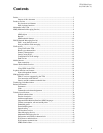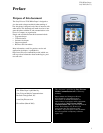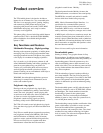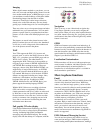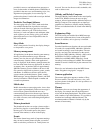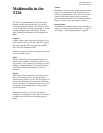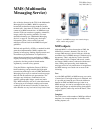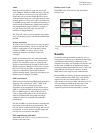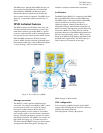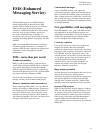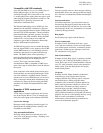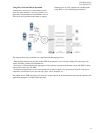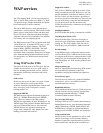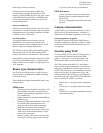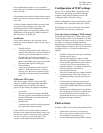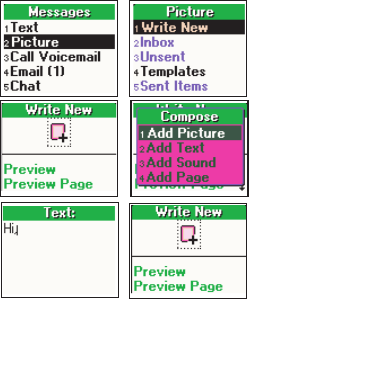
T226 White Paper
July 2003 (Rev C)
9
Audio
MMS provides the ability to send and receive full
sound (iMelody, MIDI and AMR) messages. Not only
can users share a favorite song or ring signal with a
friend, they can also use the mobile phone to record
sound and send it along with a message. Because sound
includes speech as well as music, this extra dimension
of an MMS message makes for enhanced immediacy of
expression and communication. Rather than sending a
downloaded birthday jingle in EMS, for example, a
user can send a clip of his or her own personal
rendition of “Happy Birthday”.
The T226 will contain several polyphonic ring signals.
Users can share ring signals, and download them from
the Web.
Pictures and themes
By using a snap-on camera accessory, users can take a
snapshot and immediately send it to a recipient. The
ability to send pictures is one of the most exciting
attributes of MMS, as it allows users to share
meaningful moments with friends, family and
colleagues.
Mobile picture transmission also offers inestimable
utility in business applications, from sending on-site
pictures of a construction project to capturing and
storing an interesting design concept for later review.
Editing a picture by adding text allows users to create
their own electronic postcards, an application that is
expected to substantially cut into the traditional
postcard-sending market. Themes (downloaded or pre-
defined) can be exchanged via MMS.
SMIL presentations
SMIL stands for Synchronized Multimedia Integration
Language and is pronounced “smile”. SMIL in the
T226 allows the user to create and transmit
PowerPoint-style presentations on the mobile device.
SMIL is an advanced XML-based protocol, and Sony
Ericsson MMS supports a subset of this protocol.
Using a simple media editor, users can incorporate
audio and animated GIFs along with still images,
animations and text to assemble full multimedia
presentations.
The idea of SMIL is to allow the user to customize the
page timing in PowerPoint-style presentations. The
user can decide in which order the image and text will
be displayed, as well as for how long the images and
text lines are to be shown in the display
PIM communication with MMS
With MMS in the T226, it is easy to send and receive
business cards and events.
Business card (vCard)
With MMS in the T226, the user can send his/her
business card.
.
Benefits
Essentially enabling the mobile terminal to serve as
image processor and conveyor, Multimedia Messaging
accommodates the exchange of important visual
information as readily as it facilitates fun. Business and
leisure usage of MMS will be dynamically merged,
resulting in enhanced personal efficiency for users and
increased network activity for operators. In short,
MMS affords total usage for total communication
Because MMS uses WAP as its bearer technology and
is being standardized by 3GPP, it has wide industry
support and offers full interoperability, which is a
major benefit to service providers and end users. Ease-
of-use resulting from both the gradual steps of the
messaging evolution and the continuity of user
experience gained from interoperability is assured.
Figure 2. Example of the creation of an MMS mes-
sage.



